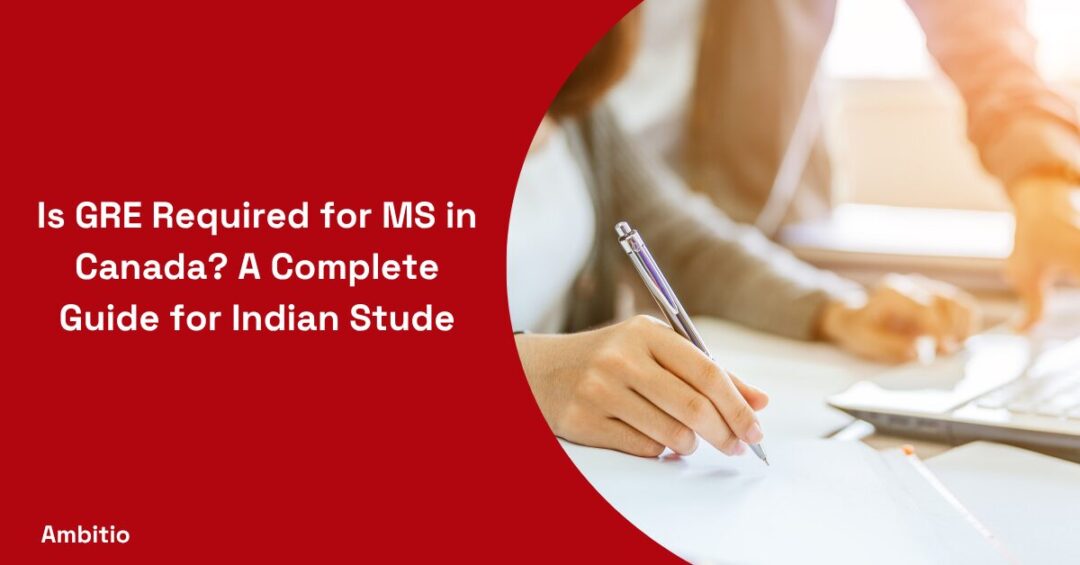6 September 2024
6 minutes read
GRE Geometry Formulas (Free GRE Prep)

Key Takeaways
- Focus on key geometry formulas for circles, triangles, and quadrilaterals to tackle GRE questions with ease.
- Consistent practice with real GRE problems helps solidify your understanding and improves speed.
- Understanding angle relationships, line properties, and triangle rules is crucial for solving complex geometry problems.
Did you know that geometry questions make up about 15-20% of the GRE quantitative section? Whether it’s calculating the perimeter of a triangle or finding the diagonal of a rectangle, the struggle is real. Many test takers dread the sight of geometry problems on test day, and it’s not just about remembering formulas – it’s about interpreting complex diagrams and solving under time pressure. GRE offers multiple benefits to the test-takers, which justifies the efforts one has to put in to crack the same.

But here’s the thing: mastering GRE geometry doesn’t have to be overwhelming. With a solid understanding of key theorems and consistent practice, you can tackle these questions with confidence. Focus on areas like triangles, circles, and quadrilaterals, and don’t forget to use flashcards for memorizing formulas. Simple preparation techniques can make a huge difference on test day. Have a clear idea of the GRE cancel score and other technicalities related to the same.
What is the Weightage of Geometry in the GRE as a Whole?
When preparing for the GRE, geometry problems carry significant weight in the quantitative section. You’ll encounter questions involving concepts like radius, circumference, and inscribed shapes, especially in diagrams featuring circles and cylinders. Have an idea of whether calculator is allowed in the GRE exam or not. Although algebra and arithmetic are more dominant, geometry still forms a key part of the overall GRE prep, with surface area, interior angles, and central angles frequently tested in relation to cubes and other 3D shapes.
The versatility of geometry on the GRE makes it challenging, from calculating the perpendicular height of a triangle to finding the chord of a circle. These problems can also appear on other exams like the GMAT, making geometry prep essential. By mastering formulas and concepts, such as diagonal lengths and surface areas, you’ll not only boost your GRE score but also improve your quantitative performance across multiple exams. The same can be applied to GRE distance problems as well.
Top 6 Common GRE Geometry Formulas
When it comes to the GRE, mastering geometry isn’t just about solving problems; it’s about knowing the right formulas to use quickly and effectively. This technique can be applied to GRE data analysis exercises as well. Whether you’re working with triangles, circles, or quadrilaterals, certain key formulas appear repeatedly on the test. Below are the top six common GRE geometry formulas every test taker should know to tackle the most frequent questions confidently.
Geometry Formulas: Circles
Circles are a common focus in GRE geometry. The essential formulas include the area, which is found by multiplying the square of the radius by pi. The circumference, or the distance around the circle, is calculated by multiplying two times pi by the radius. Additionally, be familiar with arcs, sectors, and chords. The diameter, which is double the radius, plays a key role in determining other properties of the circle, such as arc length and sector area.
Geometry Formulas: Quadrilaterals
Quadrilaterals like rectangles and squares require you to know basic formulas. To find the area of a rectangle, multiply the length by the width. For a square, multiply the side length by itself. Diagonals are often part of GRE problems, and you can use the Pythagorean theorem to find diagonal lengths in rectangles and squares. These formulas are crucial for solving questions about area, perimeter, and diagonals. GRE compound interest is another area that people usually get stuck in. Practicing such problems regularly is the best way to master them.
Geometry Formulas: Parallelograms
In a parallelogram, opposite sides are equal and parallel. The area is determined by multiplying the base by the height, with the height being the perpendicular distance between the opposite sides. Unlike rectangles, the sides are slanted, so the height is not the side length. This formula is essential for solving questions involving the area and angles within parallelograms. Choose the right GRE books to help you with the process.
Geometry Formulas: Special Parallelograms
Special parallelograms like rhombuses and rectangles have unique properties. For rhombuses, the area can be found by multiplying half of the first diagonal by the second diagonal. In rectangles, the diagonals are equal in length, while in rhombuses, they intersect at right angles. Understanding these properties helps when dealing with diagonal lengths and calculating areas in GRE problems. Keep these in mind during the GRE application process.
Geometry Rules: Angles and Lines
Angles and lines form the foundation of many GRE geometry questions. A straight line always forms a one hundred eighty-degree angle. Perpendicular lines meet at a right angle of ninety degrees. The sum of the interior angles of any triangle is always one hundred eighty degrees. Recognizing the relationships between parallel lines, intersecting lines, and angles is key to solving many geometry problems. Have the right GRE action plan to crack the exam.
Geometry Rules: All Triangles
Triangles are essential in GRE geometry. The most important rule is that the sum of the interior angles of any triangle always adds up to one hundred eighty degrees. For right triangles, you can use the Pythagorean theorem to find the length of the sides. Special triangles, like the ones with two equal sides or specific angles such as forty-five, forty-five, ninety or thirty, sixty, ninety, have predictable side lengths that make calculations easier. Knowing these rules helps with solving problems related to side lengths, angles, and areas in triangles. Understand the GRE exam eligibility process before all that.
How Can I learn Geometry Easily?
To master GRE geometry formulas, start by focusing on the key geometry concepts like triangles and quadrilaterals, circles, and parallelogram properties. For instance, the Pythagorean theorem is essential when working with a right triangle. Let’s say you have a 45-45-90 or 30-60-90 triangle – knowing the formulas for the sides will make it easier to compute values such as the hypotenuse and two equal sides. This is particularly useful when dealing with isosceles right triangles, where two sides are equal, or when you need to solve for the area of a square. You’ll encounter similar problems on official practice questions and the actual GRE. The radius of the circle or its center of the circle also comes into play when solving problems involving two radii that are equal in length. Practice using these formulas you’ll need for both free practice and online GRE courses.

Start with practice problems and GRE practice tests, particularly those offered by ETS, to familiarize yourself with the types of geometry practice questions tested on the GRE. For example, a gre student might be asked to calculate the area of the square, find the number of diagonals in a rhombus, or solve for the center of a circle. Understanding basic geometry rules and how to approach gre geometry questions—like when two triangles have two angles that are equal in length—can help you on test day.
Geometry diagrams on the GRE are often drawn to scale, so recognizing patterns like four right angles in a rectangular solid or two sides are equal in a triangle will help narrow down the answer choices. Even if a problem involves advanced topics like 3.14 for a circle’s circumference, or applying called Pythagorean triples in questions about line segments, your practice will help you quickly identify the right approach.
To build your skills, focus on GRE courses that offer free practice tests, math practice for the quant section, and resources for solving problems like finding the radius of the circle or the center of the circle. This method will allow you to solve for areas in problems that involve triangles and quadrilaterals, such as determining the area of a square or solving for the opposite of the right angle.
Ultimately, repeated geometry practice with official practice questions is the best way to approach mastering geometry. Whether it’s calculating two angles in a triangle, working with a line segment, or tackling complex quant concepts, diligent preparation will ensure you’re ready to tackle any GRE geometry problem.
Conclusion
Mastering GRE geometry is all about understanding the key formulas and rules, from circles and quadrilaterals to triangles and parallelograms. By focusing on these essential concepts and practicing with real GRE questions, you’ll be better equipped to solve geometry problems with confidence on test day. Whether it’s calculating areas, working with angles, or applying the Pythagorean theorem, having a solid grasp of these fundamentals will significantly boost your performance in the quantitative section. Keep practicing, and you’ll see your skills improve over time.
Conquer the GRE with Ambitio’s customized preparation program. Our approach is tailored to your unique learning style and preparation needs, offering a suite of resources that includes in-depth lessons, practice questions, and personalized feedback to help you achieve exceptional results.
FAQs
How much geometry is covered in the GRE Quantitative section?
Geometry makes up about 15-20% of the GRE Quantitative section, focusing on shapes like circles, triangles, and quadrilaterals.
What are some common mistakes students make when solving GRE geometry problems?
Many students misinterpret diagrams that aren’t drawn to scale, leading to incorrect assumptions about side lengths and angles.
How important is memorizing geometry formulas for the GRE?
Memorizing formulas is essential, but it’s equally important to understand when and how to apply them in complex problems.
How can I improve my speed in solving GRE geometry questions?
Improving speed comes from consistent practice with real GRE-style questions, developing the ability to recognize common patterns quickly.
What type of geometry questions are considered the most challenging on the GRE?
Questions involving 3D shapes like cylinders and cubes or those combining multiple concepts, such as inscribed shapes, are often the most difficult.
Can I use a calculator on the GRE to solve geometry problems?
Yes, you can use the on-screen calculator for basic computations, but it’s not a substitute for understanding the underlying geometry concepts.
Are there any online resources specifically for GRE geometry practice?
Yes, many GRE prep websites and official ETS resources offer geometry practice questions that mimic the test’s style and difficulty.

You can study at top universities worldwide!
Get expert tips and tricks to get into top universities with a free expert session.
Book Your Free 30-Minute Session Now! Book a call now




























